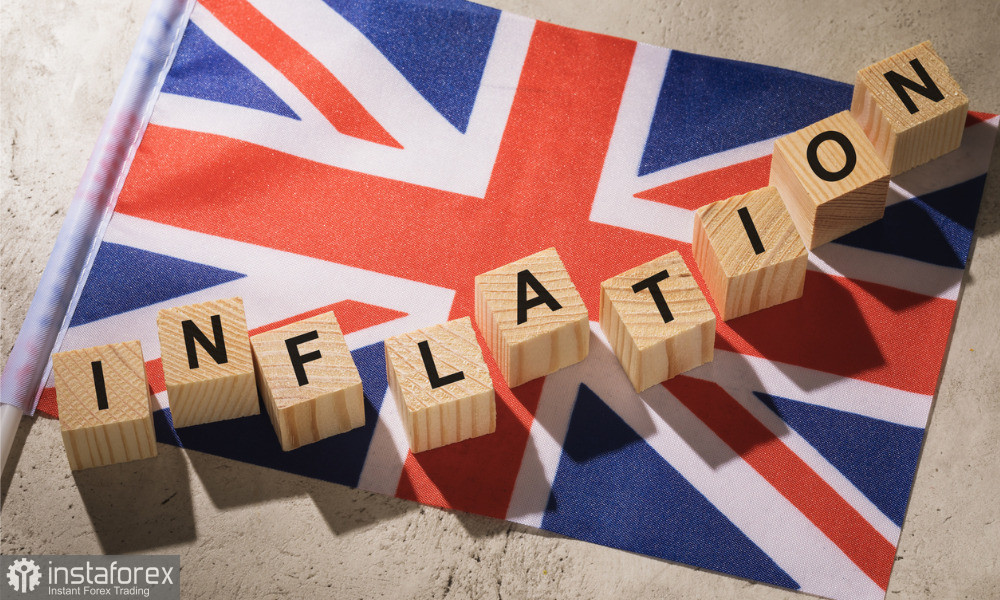The pound is still in high demand, as it tested the 24th figure today when paired with the dollar and developed a trend to the north. The pair was trading around the 1.1150 level in early November, but yesterday the semi-annual price maximum (1.2445) was updated, proving that buyers are not wasting their time. GBP/USD buyers have "walked" 1300 points in six weeks. The US dollar's depreciation was only one factor in these price dynamics. The British pound proved its standing as well. The fundamental backdrop for the pound gradually improved, particularly after the budget crisis was resolved.
This week, important macroeconomic reports were released in the UK, and most came out in favor of the British pound. Therefore, even now, on the eve of the release of the minutes from the December Fed meeting, buyers of GBP/USD can afford to take aggressive action.

It should be noted that despite the clear northern trend, opening long positions for a pair is still risky. If it supports the US currency, the Fed can "redraw" the overall picture. The market's "dovish" sentiment (regarding the Fed's future actions) was strengthened by yesterday's report on the rise in US inflation, and this fact may be used against proponents of a strong dollar. Jerome Powell expressed somewhat hawkish signals during November and talked about the high likelihood of a slowdown in the rate of monetary policy tightening. He specifically stated that it is unclear "whether monetary policy will have to be kept in this state for a long time" and "how long the regulator will have to raise the rate."
Despite ignoring these signals, the market concentrated on slowing the rate of PEPP tightening. The dollar may unpleasantly surprise GBP/USD buyers if Powell reiterates the hawkish rhetoric already expressed (although the market has already won back a 50-point increase in the rate).
Back to the British reports, though. They ended up being mostly in favor of the pound, as was already mentioned. So, contrary to expectations of a 0.1% decline, it was revealed on Monday that the UK GDP increased by 0.5% in October (in monthly terms). Compared to experts' predictions of a 0.3% decline, the processing industry's production volume increased by 0.7%. All other release elements were either in the expected range or performed as expected.
However, important information regarding the expansion of the UK consumer price index was released today. The report showed a decline in national inflation. As a result, the overall CPI came in at 10.7% (the forecasted value was 10.9%, and the previous value was 11.1%). After peaking at 6.5%, the core index declined to 6.3%. According to the release's format, the decrease in inflation was primarily brought on by lower prices for clothing, children's toys, hotel rooms, gaming products, gas, and used cars. The cost of alcoholic beverages consumed in bars and restaurants also puts downward pressure on the CPI.
Notably, the "red color" of the inflation release did not mislead buyers of GBP/USD; rather, this factor worked in the British pound's favor as the infamous "ghost of stagflation," which had alarmed investors over the previous six months, started to dissipate. It is also important to note that today's report is consistent with the Bank of England's decision to raise the interest rate by 50 basis points at its meeting in December. For instance, a recent Reuters poll revealed that 52 of the 54 economists polled regarded a 50-point increase as a "baseline" scenario. Additionally, they predict that the Central Bank's rates will reach their highest point, at 4.25%, in the second quarter of 2019. Another significant point: the majority of economists surveyed believe there is a higher likelihood of a 75-point rate increase than a 25-point increase.
As a result, the British pound's gradual strengthening and the US dollar's weak positions contribute to the upward movement of the GBP/USD trend. Due to the anticipated storm of volatility following the Fed meeting results, it is advised to take a wait-and-see position on the pair for the time being. However, if the Fed does not explicitly support the dollar, the upward dynamics of GBP/USD will emerge. 1.2500 is the primary northern target.





















